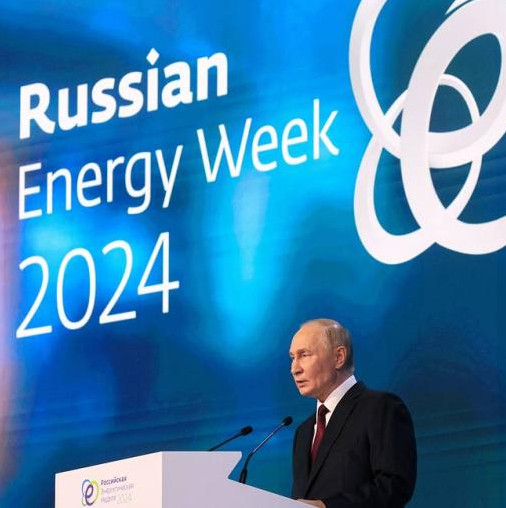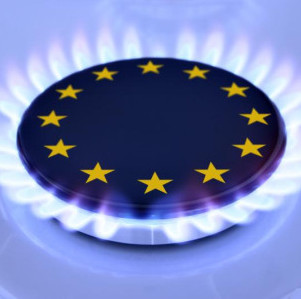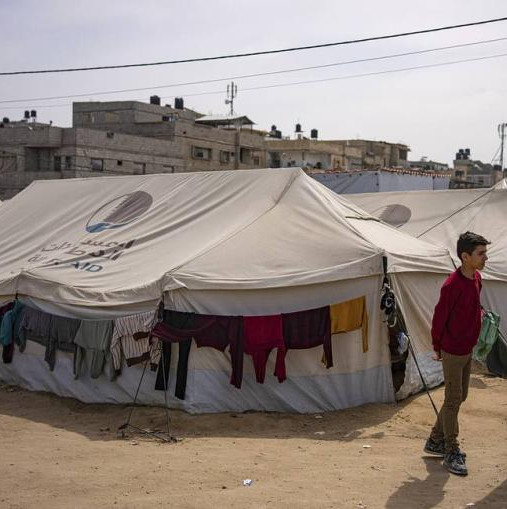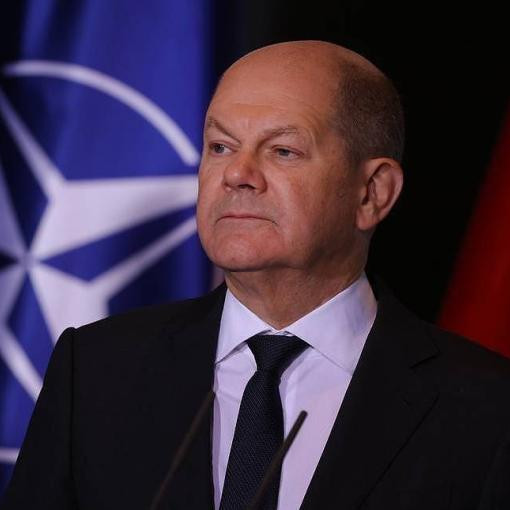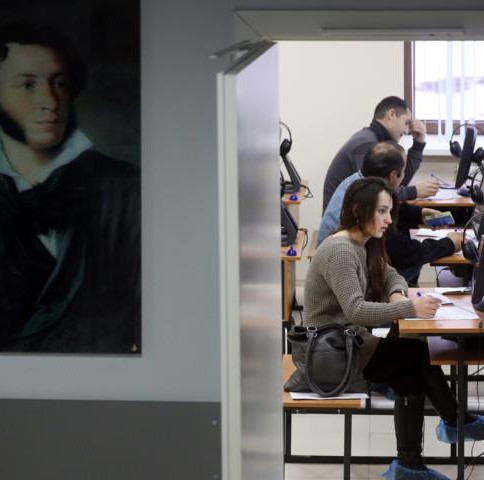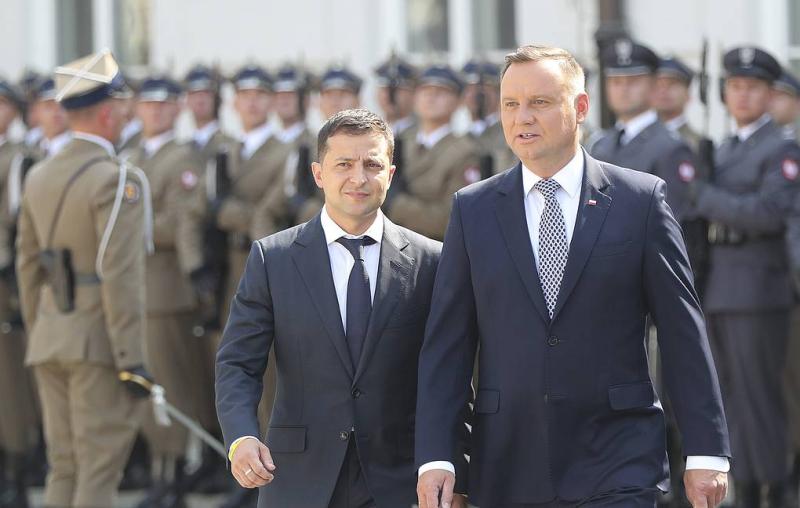
© AP Photo/Czarek Sokolowski/TASS
Top stories from the Russian press on Tuesday, April 4th, prepared by TASS
The Ukrainian and Polish presidents are seeking to show unity ahead of Kiev’s expected counteroffensive; Washington is attempting to drag New Delhi into the Western camp; and a cafe blast in the Russian city of St. Petersburg has been reclassified as an act of terrorism. These stories topped Tuesday’s newspaper headlines across Russia.
Nezavisimaya Gazeta: Ukrainian, Polish presidents in show of unity ahead of Kiev’s counteroffensive
Warsaw has announced a "special" visit by Ukrainian President Vladimir Zelensky, scheduled for Wednesday. Along with economic and humanitarian issues, the parties also plan to discuss further military assistance to Kiev, including delivery of the second batch of MiG-29 fighter jets, Nezavisimaya Gazeta writes.
A clear demonstration of support for Kiev will probably be one of the key goals of the upcoming talks. One of the decisions the parties will make may concern the delivery of the second batch of MiG-29 aircraft. Earlier, Poland and Slovakia agreed to send 29 such planes to Ukraine and the first batches have already been provided to Kiev. However, it is also possible that the Warsaw meeting will address the need for more advanced aircraft, as well as more active assistance to Kiev from other countries.
The German government is often indecisive on such issues and the application of joint pressure by Poland and Ukraine could prod Berlin into joining them, Oleg Barabanov, program director at the Valdai International Discussion Club, points out. Notably, Warsaw has staked out one of the most uncompromising stances both on weapons supplies and any potential peace process. "Polish Ambassador to France Jan Emeryk Rosciszewski recently blurted out where the country’s interests lie here. He stressed that if Ukraine lost, Poland would have to go to war," Barabanov maintained.
Zelensky’s visit to Poland comes as a continuation of the developments that began a year ago. The Ukrainian president keeps asking for more weapons and gets them eventually, noted Andrey Gurulyov, member of the Defense Committee of the Russian State Duma (lower house of parliament). He emphasized that it would be crucial for Moscow to determine how to counter Western-supplied weapons. "I would begin with the high-precision weapons that the Americans are providing, rather than with aircraft, in order to disable the relevant network-centric systems. In this case, all their hardware would be nothing but scrap iron. In addition, there is a need to simultaneously knock out the logistics arrangements for supplying weapons," Gurulyov said.
Nezavisimaya Gazeta: Washington seeking to drag New Delhi into Western camp
The air forces of India and the United States plan to hold joint drills; Japan has been invited to take part as an observer. Indian media outlets link the exercise to tensions on the border with China. The drills are seen as a means of warning China that India is not alone. In theory, New Delhi could get assistance from the Quad alliance, which brings together India, the US, Japan and Australia, but, in fact, the member countries did not make any mutual assistance commitments. This is why New Delhi is more inclined to rely on diplomacy to settle its dispute with China, Nezavisimaya Gazeta writes.
The Indian-US drills look like direct support for New Delhi from a powerful nation. All the more so since there is a platform from which assistance could theoretically be provided. However, this is only in theory. First, the Quad is not a military bloc. Second, New Delhi is unwilling to surrender even one iota of its sovereignty and has repeatedly reaffirmed its commitment to an independent foreign policy course. In practice, this means that India will continue to balance between major powers - the US, Russia and China - until its confrontation with China takes the same dramatic turn as in 1962, when then-Indian Prime Minister Jawaharlal Nehru requested military assistance from Washington.
However, such a scenario is hard to imagine. Chinese Foreign Ministry Spokesperson Mao Ning has just stated that Beijing remains committed to the idea of close cooperation with Russia and India. New Delhi has also expressed its desire to maintain India-Russia-China cooperation.
Alexey Kupriyanov, head of the South Asia group at the Russian Academy of Sciences’ Primakov Institute of World Economy and International Relations, notes that, "India also holds joint drills with Russia, named Indra." "Their pattern is different from that of the Indian-US drills. The Indra exercise involves all components of the armed forces, that is, ground troops, naval and air forces. However, the exercise that will begin shortly will involve the US, not Russia. Its goal is to make it clear that ‘together with Japan, we stand with India and, if need be, we will be able to deter China.’ However, there is nothing extraordinary about these drills. As for the Quad, the military aspect of the alliance is limited to the Malabar naval exercise that the four member states regularly hold in the Indian Ocean. But, formally, it isn’t directed against China," the expert stressed.
Media: Law enforcement agencies view St. Petersburg cafe blast as terrorist attack
The criminal case initiated following a blast at a cafe in the Russian city of St. Petersburg has been reclassified from murder by generally dangerous means (Article 105.2 of the Russian Criminal Code) to an act of terrorism (Article 205.3), Vedomosti writes.
According to investigators, an explosion rocked the Patriot cafe in St. Petersburg on April 2. More than 30 people suffered injuries and military blogger Maxim Fomin, who wrote under the pen name Vladlen Tatarsky, was killed. A young woman, Darya Trepova, was detained on suspicion of involvement in the terrorist attack shortly after the blast. Several videos of the incident show her handing a statuette over to Tatarsky, which then exploded. Russia’s Investigative Committee believes that the crime was planned in Ukraine and orchestrated from there. According to a source close to intelligence agencies, the Ukrainian masterminds of the attack failed to achieve any meaningful goals, and only embittered people against its organizers.
Ivan Konovalov, development director at the Foundation for the Promotion of 21st Century Technologies, says that while underground Islamist cells mostly sought to intimidate ordinary citizens, Ukrainian intelligence agencies tend to focus on mounting high-profile attacks on public figures who support Russia’s special military operation.
The murder of military blogger Vladlen Tatarsky is an example of the type of terrorist activities that Ukraine’s government agencies, the Security Service of Ukraine (SBU) and the Defense Ministry’s Main Directorate of Intelligence, are engaged in on an entirely official basis, Center for Political Information Director General Alexey Mukhin told Izvestia.
Each such action is carried out with the consent and under the guidance of Western intelligence agencies, Maxim Grigoryev, a member of Russia’s Civic Chamber and director of the Foundation for the Study of Democracy, pointed out. "These terrorist attacks don’t target military and government officials but civil society, namely journalists and social activists," he emphasized.
Media: Output cut by OPEC+ gives Russian oil price upward lift
The Brent oil price benchmark has renewed its monthly high, pushing past the $85 per barrel mark. The price of Russia’s Urals grade crude grew by more than 12%, rising beyond $60 per barrel. This was facilitated by the OPEC+ countries’ decision to once again cut oil production up until the end of the year, Kommersant notes.
SberCIB Senior Investment Research Analyst Gennady Sukhanov believes that the Brent price will remain near current levels in the second quarter of the year, while it may grow to $85-90 per barrel in the summer due to the seasonal increase in demand and may even surpass the $90 level by the year-end.
Valery Andrianov, associate professor at the Financial University under the Russian Government, told Rossiyskaya Gazeta that by reducing supplies OPEC+ has created the necessary margin of safety to ensure that oil prices will continue to grow steadily up until the end of the year, reaching $100 per barrel and perhaps even a slightly higher level.
The decision made by other OPEC+ members is good news for Russia, National Energy Security Fund Director Konstantin Simonov notes. Not only have we been able to redirect our export flows, but other oil producers are supporting us.
Earlier, European Union and G7 countries decided, under pressure from the United States, that they would not lower the ceiling on Russian oil exports ($60 per barrel) for fear of destabilizing the market and triggering a rise in prices.
In fact, Western countries have no leverage left to put pressure on oil prices. Simonov points out that the market has almost completely won back the price drop caused by the banking crisis and prices once again have started to rise. Now, there is an additional stimulus for price growth.
Vedomosti: MOEX to commence futures trading in UAE dirham, Indian rupee
On April 4, the Moscow Exchange will launch trading in futures contracts for cross-currency pairs involving the ruble and the UAE dirham and the Indian rupee. The trading platform’s move comes in response to client demand for a swift reaction to the rapidly changing situation in global markets. In March, the exchange launched futures trading in the Turkish lira and the Hong Kong dollar, Vedomosti notes.
Trade between Russia and the United Arab Emirates soared 68% to $9 bln in 2022. As for India, bilateral trade more than doubled to $50 bln. Meanwhile, the share of the dollar/ruble pair in forex trading dropped to 36%, the lowest level in recent years.
The UAE dirham and the Indian rupee differ in terms of their risk profiles, Finam analyst Andrey Maslov said. The dirham is a more protective and stable asset in "the new reality" that came into being after the launch of Russia’s special military operation, while the rupee is more volatile and risky.
Anton Prokudin, chief macroeconomist at the Ingosstrakh Investment asset management company, views the UAE dirham as a very convenient alternative to the US dollar. According to him, there is a major surplus in the United Arab Emirates’ current transaction account, so there is no prospect that the dirham will get away from the dollar. The only downside of the UAE currency is its lack of liquidity in Russia because Russia rarely receives export payments denominated in dirham, BCS World of Investment expert Valery Yemelyanov notes.
The Indian rupee could be suitable for diversifying more risk-oriented portfolios, Maslov assumes. Its fluctuations against relatively strong currencies are offset by the ruble’s similar volatility, Yemelyanov added. The rupee also has prospects for growth amid a rapprochement between Russia and India, the expert said. It could also become an alternative to the Chinese yuan, which is not so freely traded.
